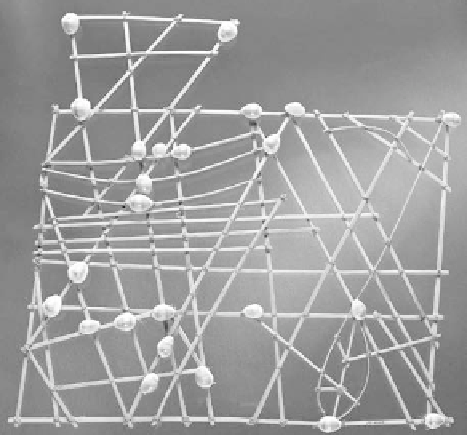Geography Reference
In-Depth Information
Polynesian stick and shell map.
Department of Anthropology, Smithsonian Institution, catalogue No. 398227, photo by P. E. Hurlbert
sites and artifacts are attractions for people from other cultures, their map-
ping has lead to people coming and destroying the sites by removing items
or disrespecting the indigenous culture's activities.
CULTURAL FORCES WITHIN “DISCIPLINES”
The cultural inf luences that have the greatest effect on map users probably
come from within mapping “disciplines” themselves, even though it may be
hard to identify specific values, beliefs, and so on. Surveyors have concepts
of geographic and cartographic representation that are different from those
held by other geography-oriented professionals. Scale, and with it the mini-
mum resolution of geographic objects, usually will be different, and the
selections of things and events for inclusion in the geographic representa-
tion will differ significantly. The culture of surveyors focuses on accurately
recording the location of specific things—and possibly events related to the
purpose of the survey. Generally, surveys are prepared for governments and
individuals for the purpose of identifying property lines, and planning for
improvements such as buildings and other construction. The culture of plan-
ning emphasizes the uses and functions of buildings and other surfaces in an
area.
The people who create and use GI and maps often are unaware of how
the GI or the map was influenced by such forces. One of the underlying rea-
sons geographic information and maps are so powerful is that unless one
knows a great deal about an area, it can be impossible to say specifically what
cultural influences led to particular choices. Denis Wood demonstrates how



Search WWH ::

Custom Search